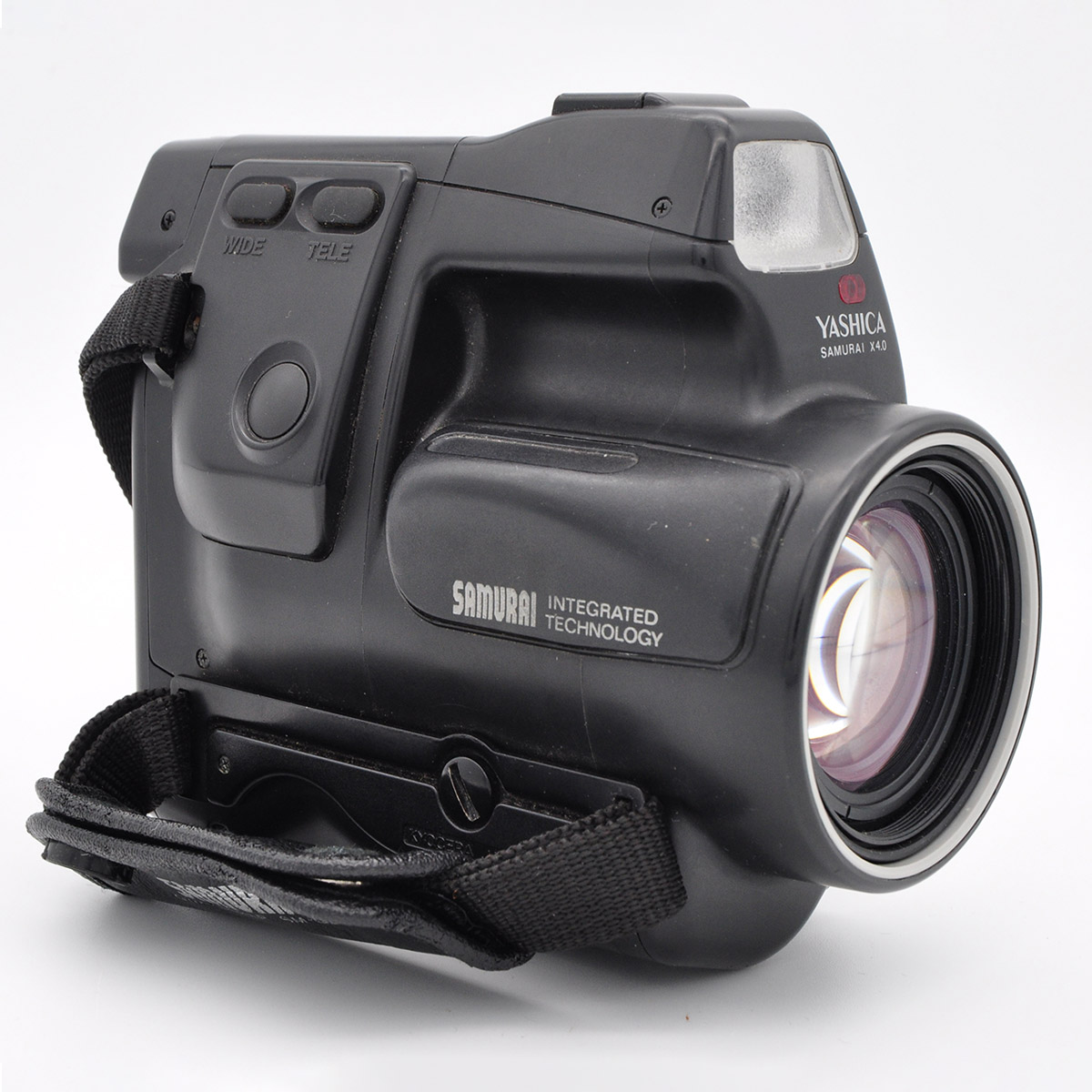Yashica Samurai X4.0
The Kyocera (Yashica) Samurai is rather an odd camera, at first glance, and even at second and third glances, it looks like a video camera from the turn of the century. The impression goes beyond appearances, it even handles like an old camcorder, being gripped snugly with the right hand to allow access to the main controls for the fingers.
There is no concession to the left handed user, and I wondered if maybe there was no such thing as a left handed Samurai, but further research shows that there was a left handed version available, this must have necessitated considerable extra expense and effort on the assembly line, and I wonder at what stage of the design process they realised that they were not catering to the cack handed (of which, I should point out, I am one). My friend Mr Google tells me that only 2% of Japanese are left handed, compared to 10% of the UK population, making the left-hander an even less commercially viable option.
The strangeness doesn’t end once you’ve accepted that this is a 35mm film camera, although similar in size and weight to many later consumer 35mm SLRs, this is actually a half-frame camera, so can shoot up to 72 exposures on a 36 exposure cassette. The Samurai is fully automatic, but the specs are pretty comprehensive, it has a 25mm-75mm auto-focus zoom lens, and the shutter speeds go from 1/500th sec right down to 3 seconds, all controlled by the TTL metering system. It certainly sounds like an SLR, with a definite, yet satisfying mirror slap each time an exposure is made. In burst mode, which is three frames per second, it can sound very indiscreet, positively paparazzi.
I took the camera to various places, and its ability to take photos in quick succession without having to take it away from the eye to wind on was useful when taking some sequences I’d intended to use for David Hockney style joiner collages, but as we will see, they never made the light of day.
Since January 2010 I’ve been using a different film camera every week, and I hope it’s not tempting fate to say that I’ve yet to have a complete failure in the 143 weeks to date, but the Samurai came pretty close. Perhaps surprisingly it was neither me nor the camera that was to blame, but the local supermarket mini-lab, who up until then had been popping my films in their machine while I did my shopping, and charging me £1 when I called for the developed film half an hour later.
All had gone smoothly for many months (allowing for rather patchy quality control, but for £1 I wasn’t complaining), but on this occasion, I returned to the desk to be met by a rather sheepish dry cleaning operative (that was their main job, the developing and printing was a side line) who handed me a mangled, wet, partly developed film, together with a profuse apology and my money back. Something had jammed in the machine, much of the film was undeveloped, though some swathes of unbleached colour negative could be made out. I took it home and put in in some black and white fixer, which was all I had at the time, and was able to scan the extremely dense unbleached negs. The results are what you might charitably call “interesting”. I later went on to put another film through it, and the results were much better, but in the warts and all spirit of my 52 cameras in 52 week project, the photo here is one of those from that first roll, perhaps appropriately enough of a sheep that looks as if it’s been taken to the cleaners.
The mini-lab kept my custom, it was very convenient after all, but a few months later they threw in the towel, clearly my £1 per week wasn’t enough to justify the overheads. It made me take the plunge and start C41 (colour negative) home processing at home, although I’d done black and white for years, I’d always been nervous about colour, but it’s cheap and simple, and I haven’t looked back since.


